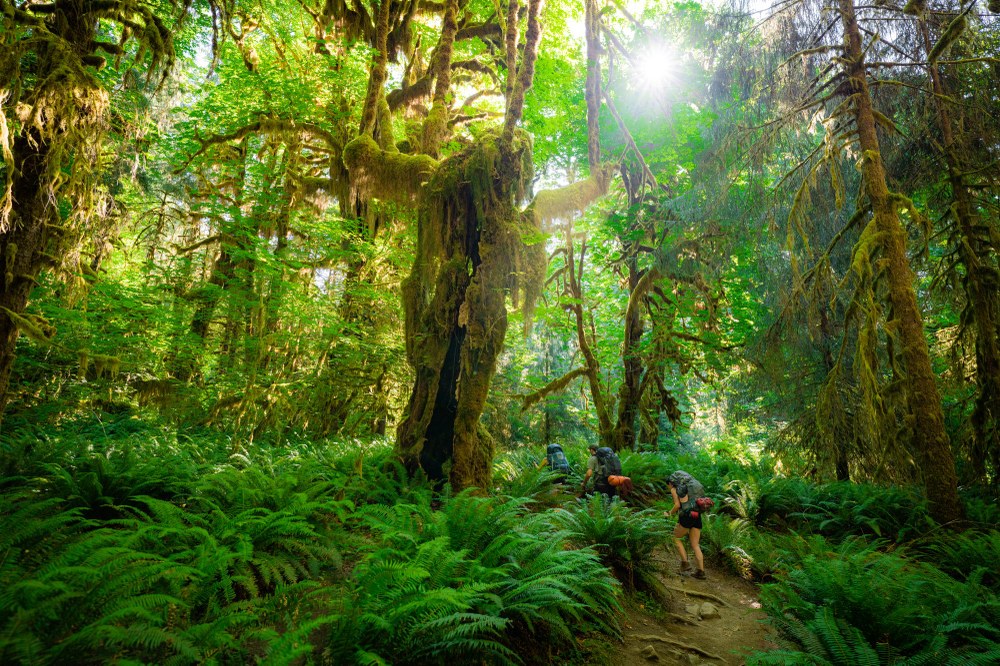
When was the last time you experienced the majestic natural splendor of one of Washington’s ancient forests? Groves of old fir, cedar, or hemlock trees towering above a trail, with thriving biodiversity below, can connect us to a different time in history. Old growth and mature forests can be found throughout Washington state, drawing Mountaineers and outdoor enthusiasts from all over to Olympic National Park and other outstanding recreational opportunities among these ancient forests like the North Fork Sauk River Trail on the Mount Baker-Snoqualmie National Forest.
Today, old growth forests are relatively rare across U.S. federal public lands due to widespread logging and other development that has taken place over the past two centuries. Despite federal protection of Northwest old growth and mature forests, our community has observed biodiversity loss and forest degradation due to climate change, wildfire, and the increasing human footprint on forest landscapes.
These threats are spurring the outdoor community to speak up to preserve these special trees and envision a more sustainable future for our region’s ancient forests. Protecting remaining Northwest old growth is one of The Mountaineers policy priorities and an important way we can leverage our public lands and waters as nature-based solutions to the climate crisis.
The Benefits of Protecting Old Growth
Whether a particular tree or forest qualifies as “mature” or “old growth” can vary depending on the region and tree species, but we’re generally talking about trees at least 80 to 120 years old. These mature trees support a dense and thriving biological community of plants, animals, and other organisms. When mature trees are protected, they can sustain biological diversity, sequester carbon, provide wildlife habitat, and support clean air and water.
The climate and biodiversity crises require us to consider new, scientifically-informed approaches to forest management to ensure that our forests are more resilient to the increasing threats of wildfire, floods, and drought. These conservation efforts should be done in a way that supports local communities and respects and upholds the tribal rights and cultural lifeways of Native peoples.
On Earth Day 2022, the Biden Administration announced an executive order outlining steps to preserve and protect old growth forests to fight the climate crisis. He announced the initiative while speaking from Seward Park - one of the largest remaining pockets of old growth and mature trees left in Seattle. Following the executive order, the Forest Service and the Bureau of Land Management (BLM) inventoried their lands for old growth and mature forests. The agencies now estimate that only 120 million acres of these forests remain on national forests and BLM lands.
Protecting old growth on federal public lands is more critical than ever, and land managers are continuing this work at a steady pace. The Forest Service just finished soliciting public input as they work to make our national forests more climate resilient. The Mountaineers is engaging in joint advocacy with partners like Outdoor Alliance because we believe the recreation community can be a powerful advocate for our ancient forests and the transformative outdoor recreation opportunities they provide.
Standing Up for Northwest Forests
Mountaineers Conservation & Advocacy Director Betsy Robblee was recently appointed to a two-year term on a new committee to advise the Forest Service and provide recommendations on how to modernize landscape management across 19 million acres of federally-managed lands in western Washington, western Oregon, and northwestern California. Managing our Northwest forests in a way that protects old growth and mature trees and centers climate resiliency will be a key focus of the committee, and it will be critical to have human-powered outdoor recreation represented as this initiative moves forward.
There is a lot of work ahead to protect the old growth and mature forests in the Pacific Northwest and beyond. We look forward to sharing future opportunities to support these efforts through public engagement opportunities and advocacy. Together, we can protect old growth forests so that future generations of Mountaineers can connect to nature among the same trees we’re privileged to experience today.
 The Mountaineers
The Mountaineers